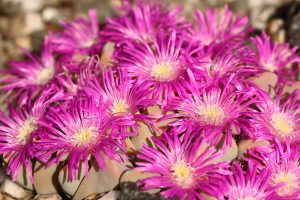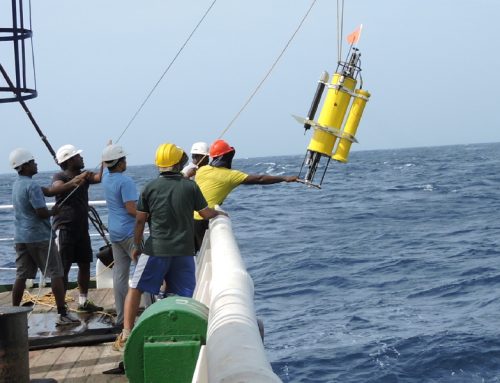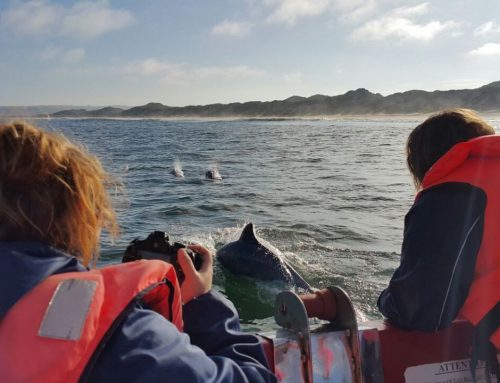A portrait of the Western Cape 300 years ago would show rolling expanses of a vegetation type with an extraordinary diversity of bulb species called Renosterveld, being grazed by large numbers of big game, including the extinct bluebuck, quagga, as well as the eland and black rhino, hence its name.
The large numbers of game have gone and the Renosterveld is down to 5% of its original expanse, with less than 50 remaining fragments in the Overberg that are over 100ha and even fewer of this size in the Swartberg. An emergency response is required to prevent the extinction of this jewel in the Cape Floristic Region: the smallest and richest plant kingdom on earth.
The emergency response starts with restoring the watercourses that link and feed these fragments, which are the only source of intact biodiversity in the region’s farming landscape. This is what the WWF Nedbank Green Trust is funding through a three-year project that started in September 2015, titled ‘Watercourse restoration in critically endangered Renosterveld’.
‘Renosterveld is one of the richest ecosystems in the world, mostly due to its extraordinary bulb diversity. However, 95% of it has been replaced by large-scale commercial agriculture, mainly wheat, barley and canola, which are rotated with oats and lucerne,’ says Dr Odette Curtis, Director of the Overberg Renosterveld Conservation Trust, who is heading the project.
Formerly from the Fitzpatrick Ornithology Institute, she has been working on Renosterveld for 10 years and is based in the village of Napier, which is situated at the centre of the ‘wheat belt’ project region.
In its original state, Renosterveld was probably a far more grassy system, with a higher rooigras (Themeda triandra) component, and a significantly higher plant diversity. The combination of free-ranging grazing and browsing game maintained the diversity and structure of this system. As agriculture encroached on this land, the historic disregard for Renosterveld was emphasised in its description as ‘uitvalgrond’ or ‘wasteland’.
Dr Curtis and her team have now identified ecological corridors in the form of streams, rivers and seepage areas that link the disparate patches of Renosterveld between farms in the Overberg Rûens (wheat belt). These watercourses are the lifeblood of this habitat and the health of the entire region, but many of the watercourses are in a badly degraded state.
‘Numerous rivers, streams and wetlands have been invaded by alien invasive vegetation, with advanced soil erosion and water pollution or destruction by ploughing. Restoring these watercourses and assisting landowners in managing them, paves the way for water conservation, ecosystem restoration and better land management in this fragile system,’ explains Dr Curtis.
‘Partnering with farmers and landowners is the only way in which we can restore the health of the watercourses and this unique habitat from an otherwise inevitable extinction. What is so encouraging is how many farmers are interested and on board, and have come to us for advice and help since the project started in September 2015.’
Part of the success of this project is the manner in which the project manager on the ground, Keir Lynch, engages with farmers and landowners. Formerly the stewardship extension officer at CapeNature, he has experience and expertise in developing strong, mutually beneficial partnerships with landowners to conserve and expand critical biodiversity areas.
‘We are currently working with about 50 farmers who are invited to sign a conservation easement or memorandum of understanding with the Overberg Renosterveld Conservation Trust,’ says Lynch. ‘This is a conservation servitude on their title deed or a written commitment to manage the watercourses and Renosterveld habitat on their land according to the conservation and biodiversity management plan.’
To encourage the farmers the project team assists them with controlled, ecological burns at the right time of the year and provides them with a full-colour report of the Renosterveld habitat on their land.
Some of the rare and endemic Renosterveld plant species include:
- Moraea elegans – a bulb in the iris family, with a yellow flower and striking green and orange markings;
- Polhillia curtisiae – an electric yellow member of the legume family that was named after Dr Curtis who found it in the WWF-owned Haarwegskloof Renosterveld Reserve in the eastern Overberg between Bredasdorp and Swellendam where the Renosterveld Research Centre and self-catering guesthouse are situated;
- Hesperantha kiaratayloriae – a bright pink bulb, found only on two sites on quartz Renosterveld thus far.
The project team has mapped the Renosterveld fragments they will be targeting, and has started intensive alien vegetation and watercourse restoration in these areas, including:
- Two tributaries on the eastern side of the Breede River – the Dipka and Doring Rivers – between Heidelberg and Swellendam, which are infested with alien invasive trees, notably eucalyptus, black wattle and rooikrans;
- The Ouka River (also known as the Freek Botha River), which is hardly flowing and is significantly eroded. This is a typical Renosterveld seepage stream that flows into the Riviersonderend River between Riviersonderend and Swellendam. An endemic member of the legume family found only on this watercourse is Polhillia brevicalyx;
- The Hansjes River near Napier, which has major erosion dongas, requiring interventions such as silt trapping and gabions;
- Parts of the Sout River that crosses the Overberg and feeds the De Hoop Vlei Ramsar Site near Bredasdorp where, at the headwaters of the Sout River on Kleindam Farm, is one of the only wetlands the team has located so far in Renosterveld, with visiting flamingoes and rare plant species;
- The half-way point of the Sout River on Kykoedie Farm, between Bredasdorp and Riviersonderend, where intervention is required to deal with the erosion of the river banks;
 ‘We applaud the farmers who are partnering us in this initiative,’ says Dr Curtis. Their farms range from 800 hectares to several thousand hectares and they are under pressure to farm every inch of their land due to the exorbitant cost of production land. Ten years ago, land in the wheat belt region averaged R10 000 per hectare; today it is R30 000 – R80 000 per hectare.
‘We applaud the farmers who are partnering us in this initiative,’ says Dr Curtis. Their farms range from 800 hectares to several thousand hectares and they are under pressure to farm every inch of their land due to the exorbitant cost of production land. Ten years ago, land in the wheat belt region averaged R10 000 per hectare; today it is R30 000 – R80 000 per hectare.
‘Through this initiative many farmers have stopped ploughing up the Renosterveld remnants and watercourses, and there is encouraging commitment to biodiversity conservation to improve the health and supply of water to this region. An exciting recent project find has been the discovery of two indigenous fish species – the Cape kurper (Sanelia capensis) and Burchell’s Redfin (Pseudobarbus burchelli) in the Hansjes River near the village of Napier. It was previously thought that Redfins do not occur in the Renosterveld system.
‘We will continue to sample the river systems throughout the project area to determine the distribution of species across the river systems in the Renosterveld,’ says Dr Curtis. ‘These are fantastic finds in addition to the incredible plant and animal species already recorded in this area.’
For more information about the project and accommodation on the Renosterveld Reserve go to www.overbergrenosterveld.org.za







